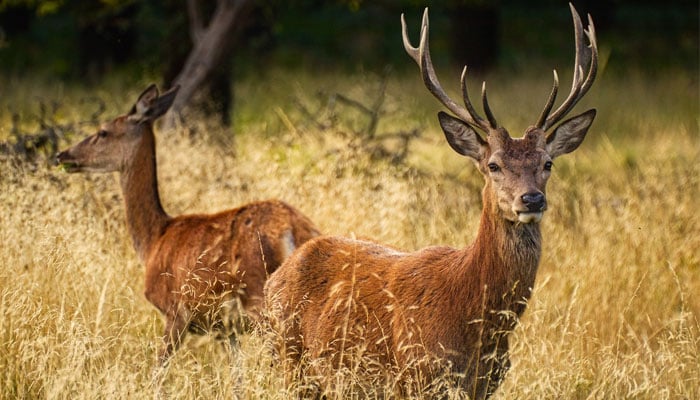Scientist fear possible spread of scary 'zombie deer disease' to humans
First case detected in Yellowstone National Park which leaves animals drooling, lethargic, emaciated, stumbling
December 24, 2023

Scientists in the United States are sounding alarms over the possible spread of the chronic wasting disease (CWD), dubbed as 'zombie deer disease', to humans in the future after its first-ever case was reported in Yellowstone National Park last month.
According to the Centres for Disease Control and Prevention (CDC), CWD is a highly contagious prion disease that can also cause weight loss, stumbling, listlessness and neurological symptoms.
The disease has been spotted in deer, elk, reindeer and moose in areas of North America, Canada, Norway and South Korea. Its first case was detected in a deer in Yellowstone National Park's Wyoming area.
Symptoms can take up to a year to develop and some have dubbed it the "zombie deer disease" since it changes in the hosts’ brains and nervous systems, leaving animals drooling, lethargic, emaciated, stumbling and with a telltale "blank stare," The Guardian reported.
CWD is one of a cluster of fatal neurological disorders that includes Bovine spongiform encephalopathy (BSE), commonly referred to as "mad cow disease."
"The BSE outbreak in Britain provided an example of how, overnight, things can get crazy when a spillover event happens from, say, livestock to people," Dr Cory Anderson, a program co-director at the Center for Infectious Disease Research and Policy (CIDRAP), said.
"We’re talking about the potential of something similar occurring. No one is saying that it’s definitely going to happen, but it’s important for people to be prepared," Anderson added.
According to Anderson, the pathogen, which can persist for years in dirt or surfaces, is resistant to disinfectants, formaldehyde, radiation, and incineration at 1,100°F.
It poses a significant threat to both animals and the environment it infects, as there is no known method for effectively and easily eradicating it.
The Alliance for Public Wildlife estimated in 2017 that 7,000 to 15,000 CWD-infected animals a year were unwittingly being eaten by humans, and that the number was expected to increase by 20% annually, posing a significant threat to humans.
The CDC recommends hunters have animals tested before eating the meat, as the hunting season is underway.
Meanwhile, Yellowstone staff has increased collaboration with the Wyoming Game and Fish Department and other state agencies to identify areas with increased risk for CWD.











